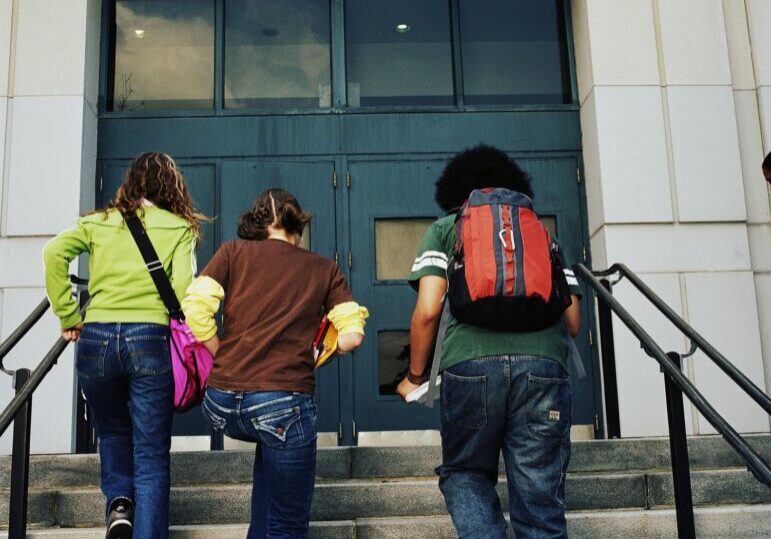Published in the September 2015 NJEA Review
by Adrienne Markowitz and Eileen Senn
Health and safety issues, such as poor ventilation, temperature extremes, mold, pests and pesticides, renovation dust and noise, vehicle exhaust, and toxic substances in maintenance, cleaning, art and shop supplies, affect most school staff and can be a reason why members are discontented at work. The local association must become familiar with the key health and safety issues for school staff and ways to address them.
As the first step, a local association must commit to make members’ health and safety a priority and organize members and allies to pressure the administration. The local association that commits to health and safety may achieve these positive outcomes:
Better working conditions: Real improvements can be won.
Better performance: Fewer sick days result in more productivity for staff and students.
Membership satisfaction: Improving working conditions improves school staff morale and may even increase staff retention.
Leadership development: When individuals work together, speak up, and take successful action, they learn to be leaders.
Association visibility and credibility: Members will be able to see that the local association is active, effective, and worth supporting.
The 10 steps
Local associations that want better working conditions for members need to organize. Organizing is necessary because nothing else works. Never rely on school districts and government agencies to do the right thing.
Here is the NJEA 10-step organizing approach for effective local association health and safety programs.
- Commit: Make membership health and safety a priority. Enlist the assistance of your UniServ field representative.
- Organize: Form a local association health and safety committee. Establish a process to receive and respond to hazards and health problems.
- Research: Examine district injury and illness logs. Review district health and safety procedures. Check whether the district is in compliance with Public Employees Occupational Safety and Health (PEOSH) requirements.
- Document: Survey members. Conduct walk-through evaluations. Take photos and/or videos. Use checklists.
- Educate: Use the NJEA Health and Safety Manual. Distribute NJEA fact sheets. Hold training sessions. Show videos. Keep the membership informed and involved.
- Assist: Assist sick and injured workers with treatment and compensation.
- Problem solve: Prioritize problems and identify solutions. Pick winnable issues. Ask the district to implement solutions. Follow up to make sure changes are made.
- Mobilize: Enlist the help of parents, students, community groups, elected officials, activist groups, the media, and other potential allies.
- Negotiate: Negotiate and enforce contract language.
- Use PEOSH: File PEOSH complaints on violations of PEOSH standards when necessary. Participate in inspections and follow-up.
Where to start
What health and safety problem should your local commit to solving?
These five criteria can help a local association decide what problem to tackle first.
Winnable: The problem must be some health and safety condition that can be improved if the administration acts. The local association’s first effort should be one that ensures victory – even if that victory is modest.
Widely felt: Many members should be affected. Deeply felt: Members should care about the problem and see it as very important. Easy to understand: Members should have experienced the problem firsthand.
Result in a real improvement: When the problem is corrected, it will truly make a difference in working conditions.
Regulated: Ideally, there should be a law in place that can help force the district to take action on the problem.
Able to win community support: If necessary, the problem should also provide the opportunity to win community support.
Making it work
The Southampton Township Education Association (STEA) in Burlington County has a health and safety committee that committed to getting mold and ventilation issues under control in the district’s three schools.
The union-only committee met regularly and organized with members to document problems. After compiling information, the STEA committee was able to meet with the district administration to clearly present the concerns. The outcome was an effort to seek a bond referendum to replace the underperforming ventilation systems.
“We mobilized our members to seek out support from the public and the bond passed. The project to install new heating, ventilation, and air conditioning (HVAC) began last June at the end of the school year,” said STEA President Donna Banes.
The committee stayed on top of the planning and made sure all concerns were addressed by the architects and the contractors who were awarded the bid. STEA requested the bid specs and asked to be made aware of all change orders to the project as it progressed. The association and the district administration have continued to work together to be sure the system is working as it was designed to do.
Adrienne Markowitz holds a Master of Science in Industrial Hygiene from Hunter College, City University of New York. Eileen Senn holds a Master of Science in Occupational Health from Temple University in Philadelphia. They are consultants with the New Jersey Work Environment Council, which is a frequent partner with NJEA on school health and safety concerns.
